The food tour that really gives you a taste of Tahiti
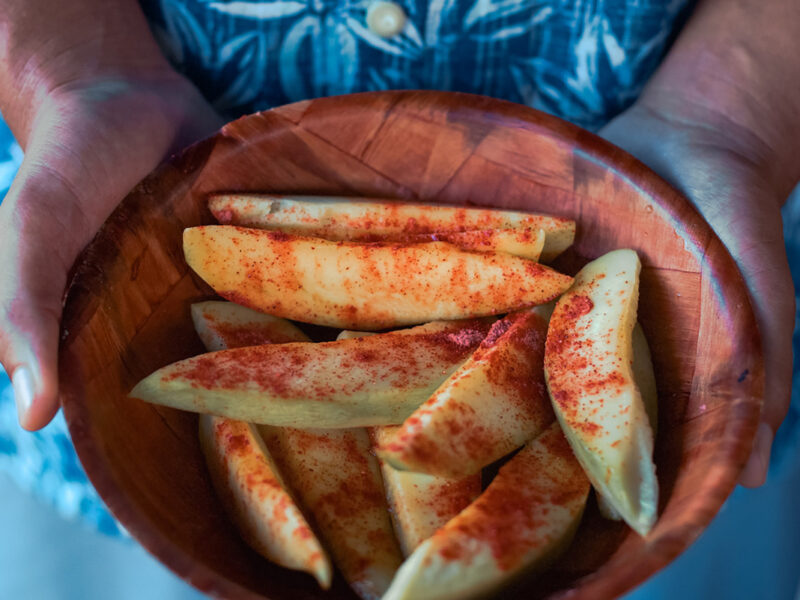
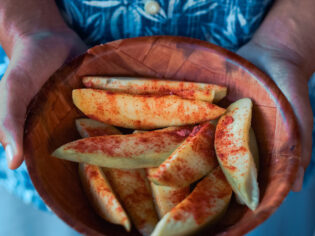
If you want to know what’s what in the Islands of Tahiti, take a food tour says intrepid epicurean Carla Grossetti.
Heimata Hall strides towards us with all the confidence of an actor walking onto a stage. He’s wearing mirrored shades, a shirt patterned with tropical leaves and flip-flops. “Oh hey… ia orana,” he smiles, which we learn means ‘hello’ or ‘be well’ in Tahitian. Heimata has arranged to meet us near a small market stall outside the main ferry terminal in Moorea, which is the first stop on his small-group Tama’a Street Food Tour of Moorea.
“The whole idea behind my food tours is to give visitors access to what and where locals like to eat on a day-to-day basis,” says Heimata, founder of Tahiti Food Tours. “We’ve got three cultures involved in the food scene here. We have the local Polynesian culture, and then we’ve got the French culture and the Chinese culture, which is something that surprises people. The French brought the Chinese here to work as labourers in the sugarcane plantations in the 1860s and they’ve had as much influence on our cuisine as the French,” he says.
Eat the Tahitian way
Tama’a means ‘to eat’ in Tahitian and that’s exactly what we do, starting with slices of crunchy mango dusted in li hing mui, the salty-plum powder that travelled to the islands with the Chinese. We also try a small square of traditional Tahitian coconut cake that the friendly stallholder says follows a long-held family recipe.
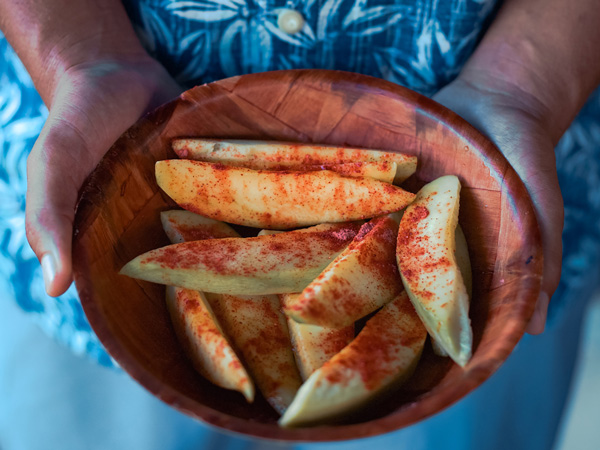
Salty-plum powder complements the tangy flavour of crunchy mango. (Image: Tahiti Food Tours)
“These are two of the locals’ favourite snacks. One of the great things about living here is the variety of fruits that we have. We have 10 different varieties of mango, different types of bananas and pineapples and so many coconuts,” says Heimata. There’s perhaps nobody better equipped to lead a street food tour around the island of Moorea, in the Islands of Tahiti, than Heimata.
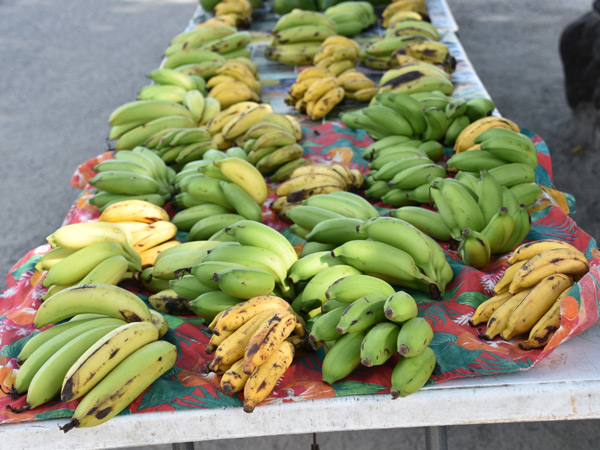
The Islands of Tahiti are abundant in tropical fruits. (Image: Tahiti Food Tours)
He was born and raised on the island of Moorea where he worked in the family pearling business before moving to the Hawaiian Islands to study at the Culinary Institute of the Pacific and pursue his passion of becoming a chef. Heimata also hosted a cooking show, Scratch, which aired in the United States.

Tour guide and chef Heimata Hall shares stories about the blending of cultures and cuisines. (Image: Tahiti Food Tours)
Must-try Tahitian dishes
Firi Firi
Over the next few hours, we stop off at a local supermarket to pick up firi firi, a coconut doughnut freckled with sugar and traditionally eaten for breakfast with coffee, and sit around a weather-worn table near the car park of a Chinese restaurant, Golden Lake, to try Polynesia’s most popular ‘fast food’: the casse-croûte (chow mein noodle sandwich).
Ma’a tinito
With each pit stop, Heimata unlocks more of the islands’ history through the cuisine and tells stories of his own travels and life. We also try ma’a tinito, a pork dish created by Chinese migrants.
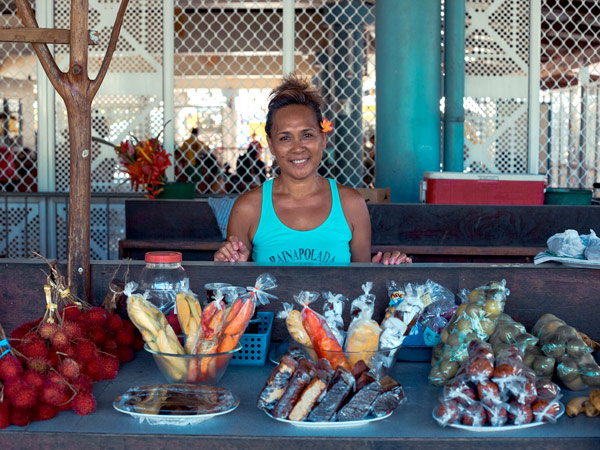
The tour steers visitors to a Moorea market stall. (Image: Carla Grossetti)
“You will see the casse-croûte a lot around the Islands of Tahiti. But what makes Golden Lake’s version the best is the Asian-style soy sauce they put on the chicken, vegetables and noodles and the fact they put it in the oven to warm it up. It is absolutely delicious. It’s one of my favourite things to eat,” he says.
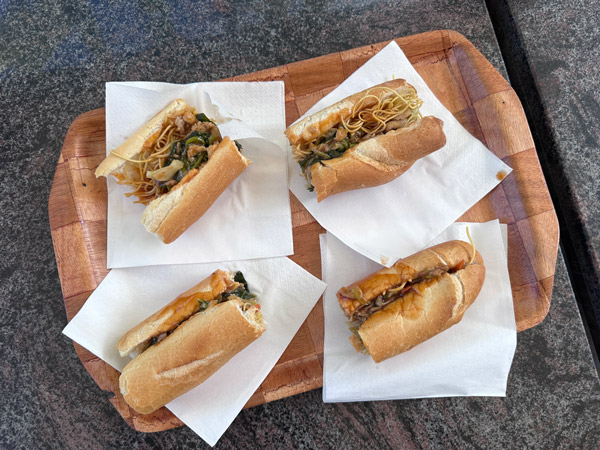
Bite into the quintessential casse-croûte. (Image: Carla Grossetti)
Heimata says it was only through travelling around the US that he realised how special Tahitian street food was. “I came back home to help celebrate that,” he explains.
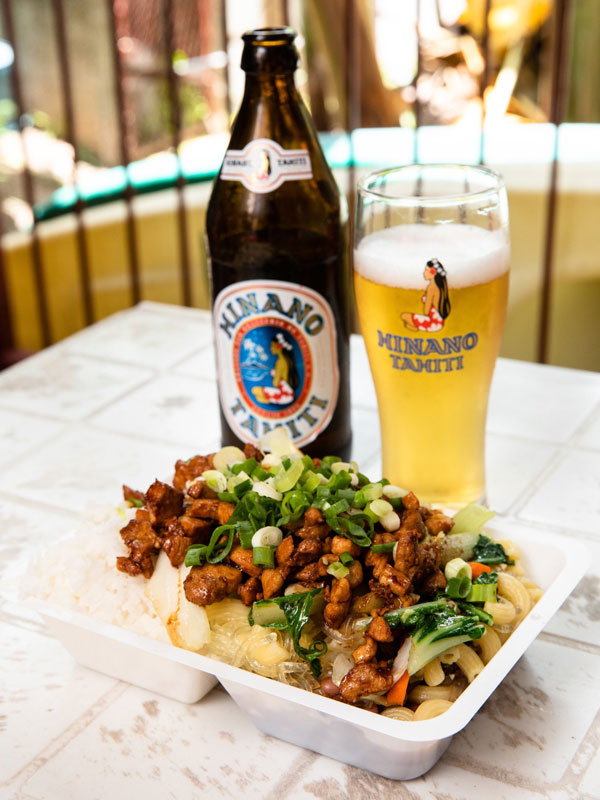
Ma’a tinito is a twice-cooked pork dish that is one of the most popular dishes on the islands. (Image: Tahiti Food Tours)
Tuna tartare
The chef also steers us to popular Moorea eatery Moz Cafe as part of the tour to try tuna tartare along with the national dish, poisson cru (fish cured in lime juice and coconut milk) and talks us through his recipe for poulet fafa (chicken with taro leaves). He also detours to rustic seaside shack Snack Rotui, known for its mustard chicken dumplings. These are not eateries you’ll find in the guidebooks.
“I’ve been coming to Snack Rotui since I was a kid,” says Heimata, who points out various grooves and scratches on the counter he says have been there for decades. The restaurant, fenced on one side by a wall of jungle, gives no hint as to the reverence reserved for its wontons.
“It might be a little bit intimidating to come to a mom-and-pop food stand like this on your own because it’s full of locals and there’s a language barrier. But the whole point of travelling is to try something new and I want you to feel like I’ve shared with you some wonderful local secrets today,” says Heimata.
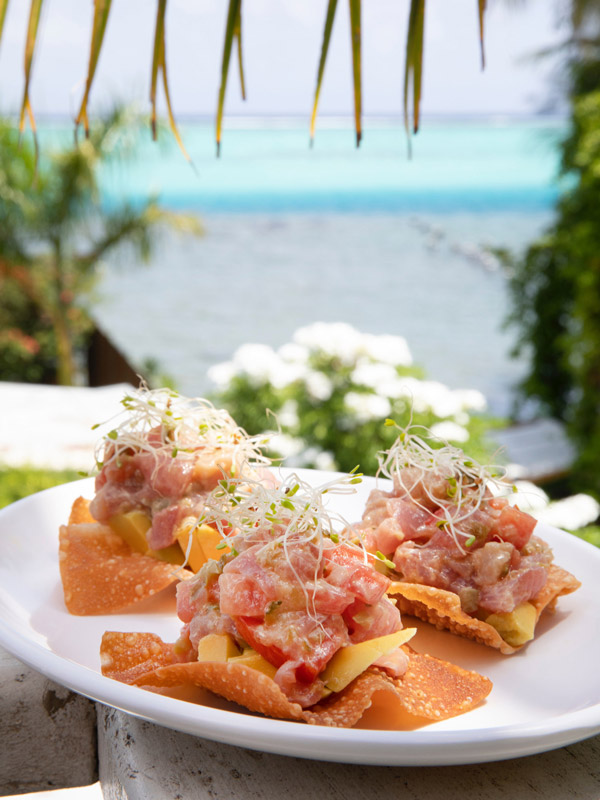
Try tuna tartare at Moz Cafe. (Image: Tahiti Food Tours)
Jams and gelato
The final stop on our small-group tour is to Moorea Tropical Garden where we follow a flagstone path to a vanilla farm, tropical garden and restaurant. Our table on the terrace overlooks vertical mountains draped in a blanket of green jungle that falls softly into the sea. Heimata hands around a tasting tray of jams and gelato explaining the flavours such as corossol (soursop), vanilla, gardenia, pamplemousse (grapefruit) and pineapple.
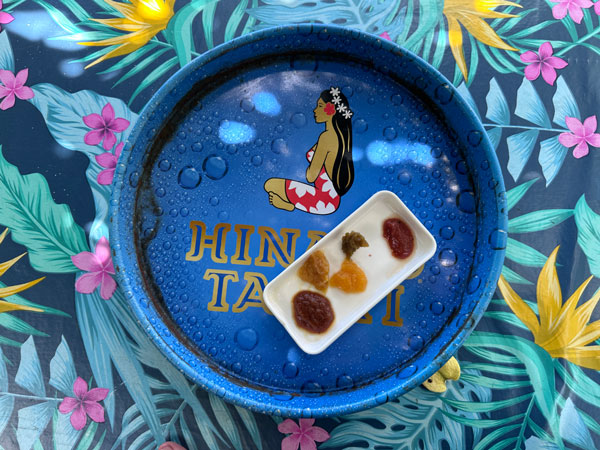
A tasting tray of jams. (Image: Carla Grossetti)
“The artisan gelato is part of a growing movement in Tahiti that is starting to make some noise. We have all these different influences here but now we are showing off our culture through food that is proudly Polynesian, with strong French and Chinese influences.”
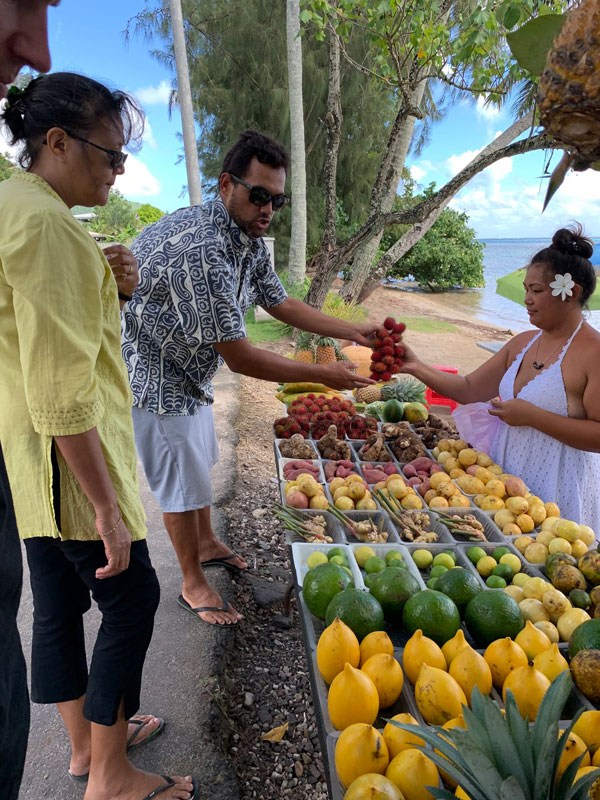
Sample tropical flavours at Moorea Tropical Garden. (Image: Tahiti Food Tours)
We felt like we’d arrived in paradise long before we sampled the fragrant gelato. But it’s in exploring the exciting mix of influences that have shaped the culinary landscape here that gives us more of an understanding about the rich culture to be found.
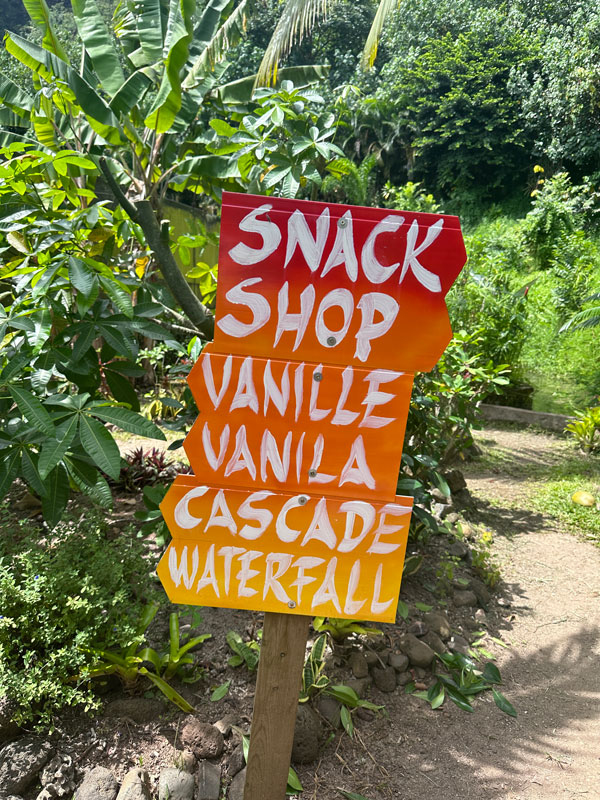
Take this as a sign to stop for snacks at Moorea Tropical Garden. (Image: Carla Grossetti)










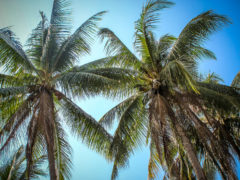
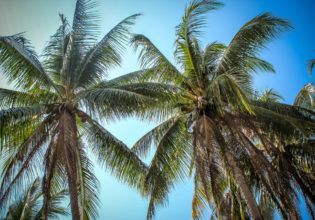

LEAVE YOUR COMMENT